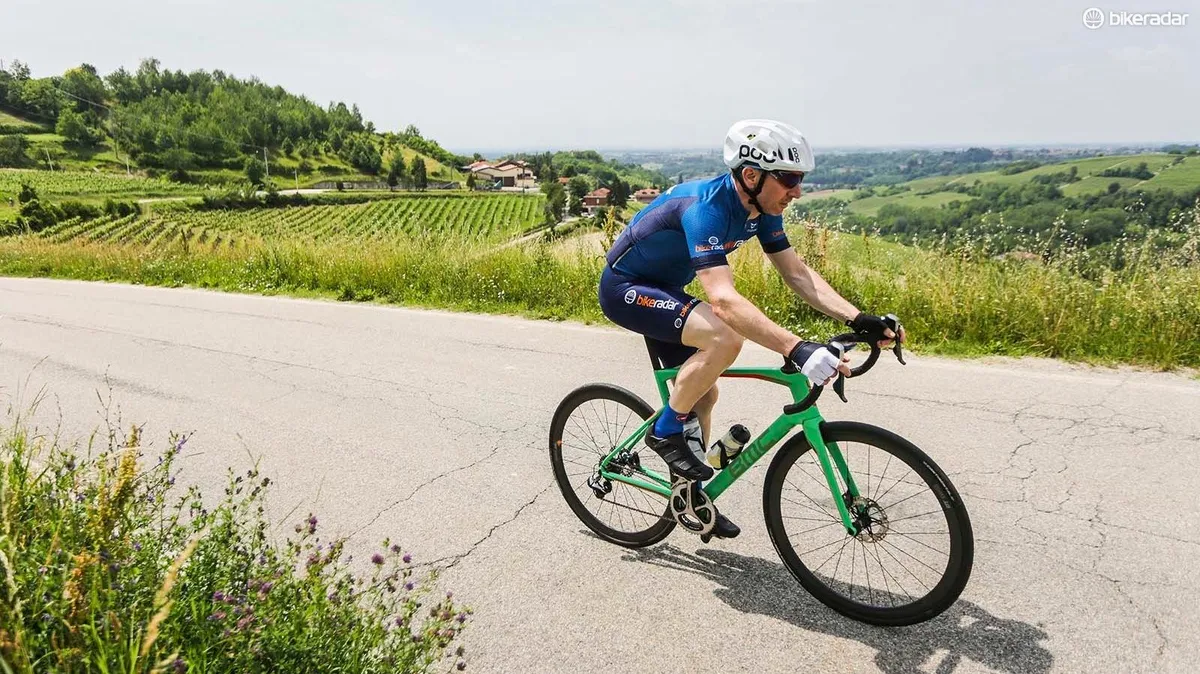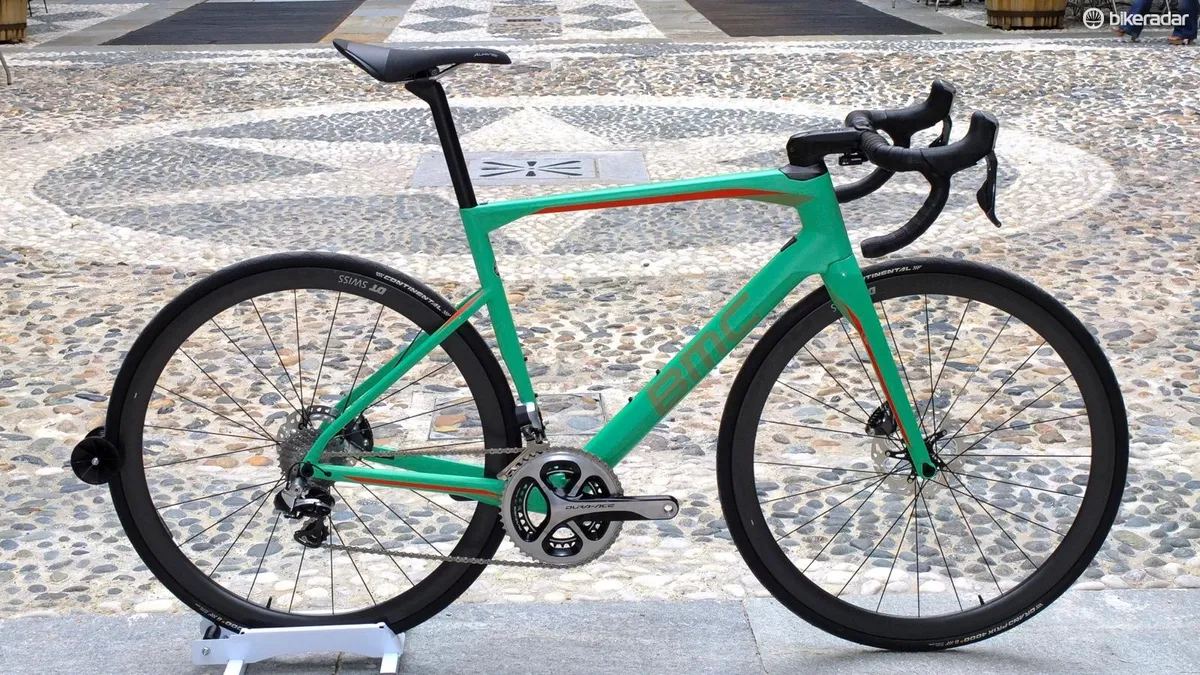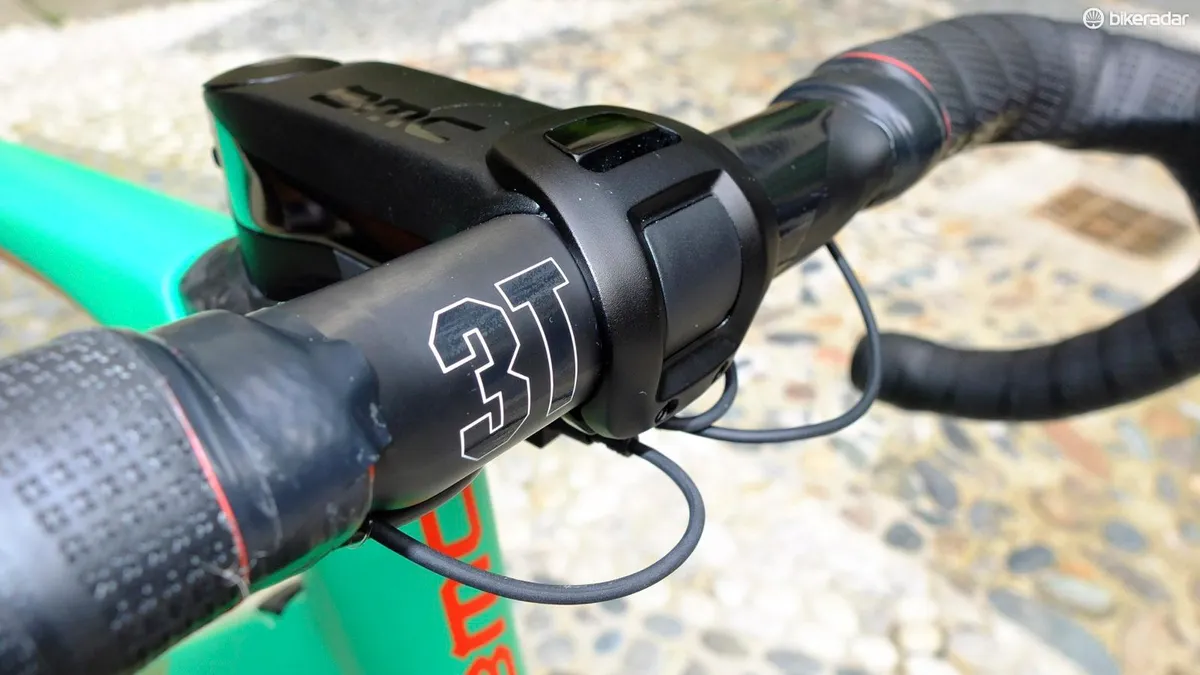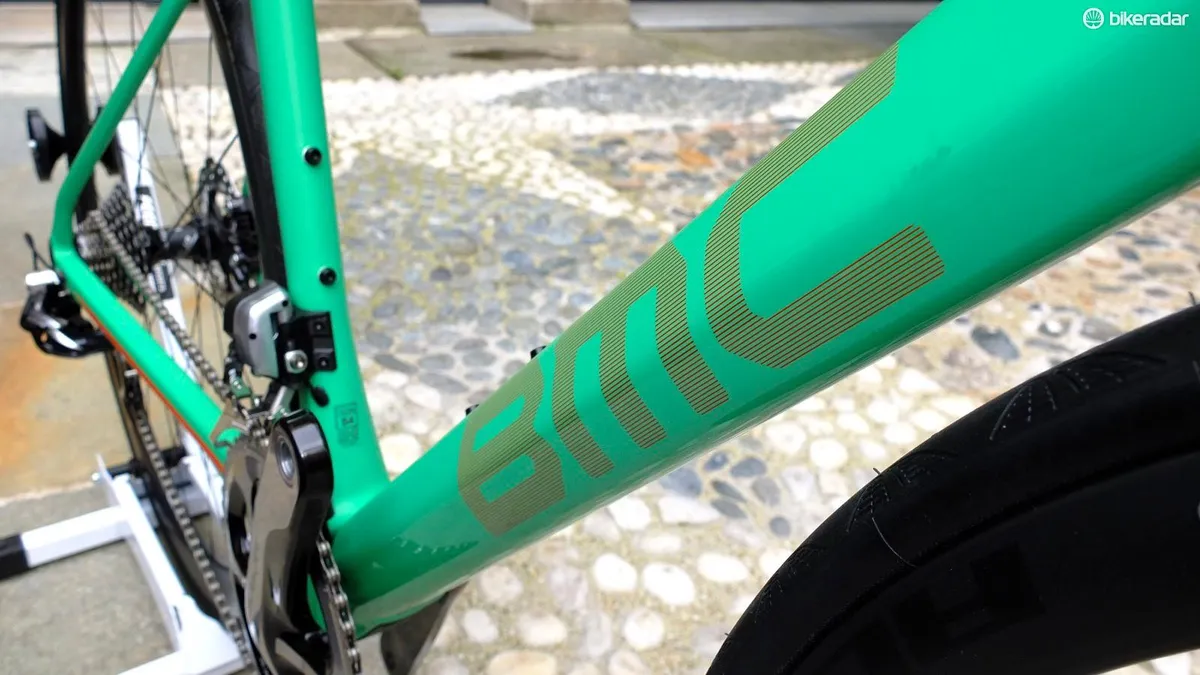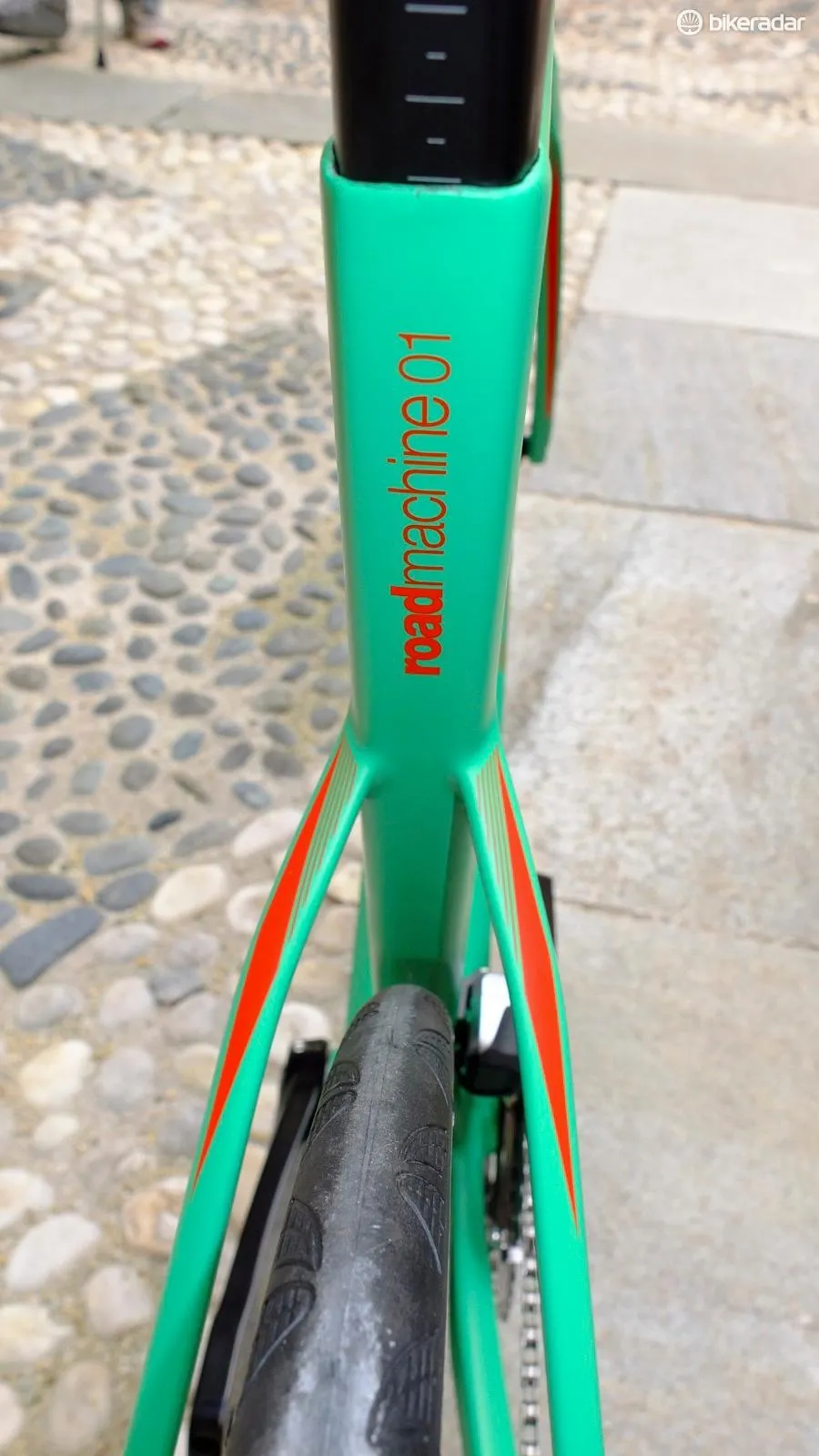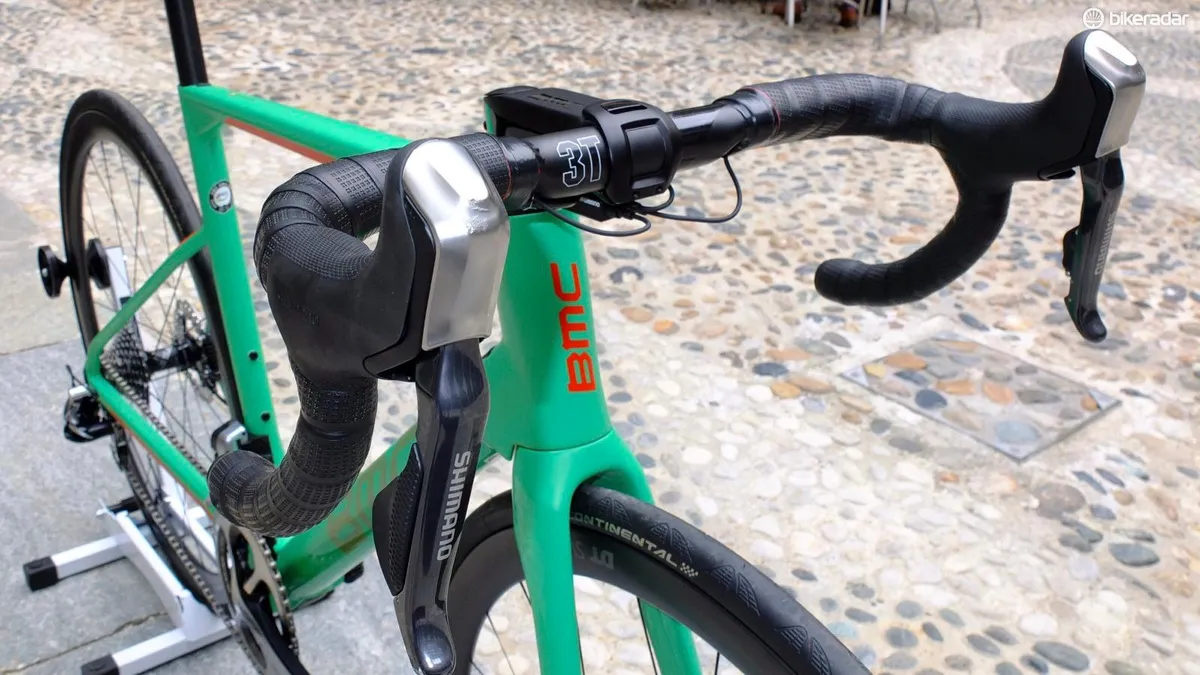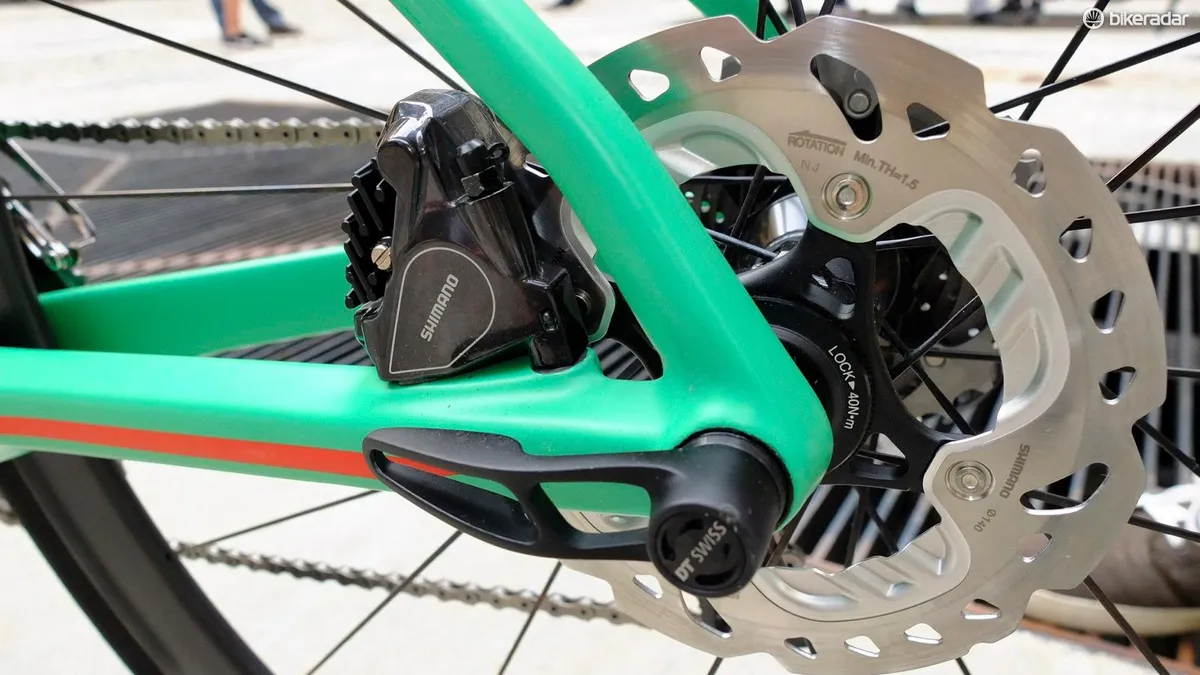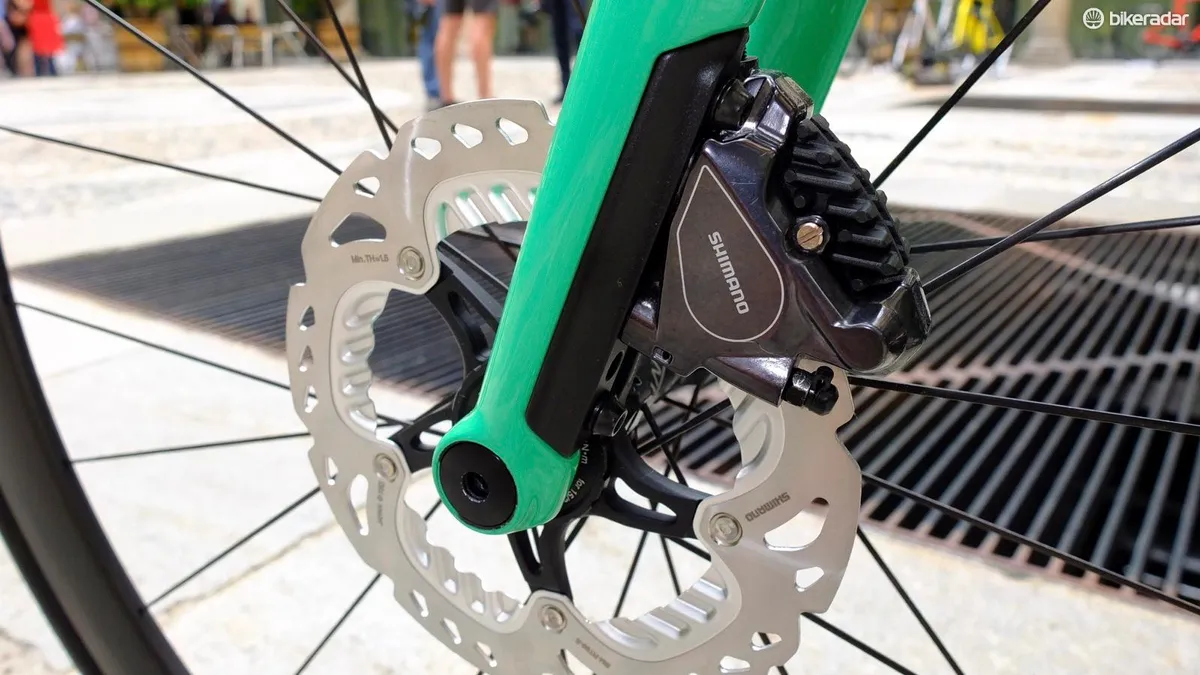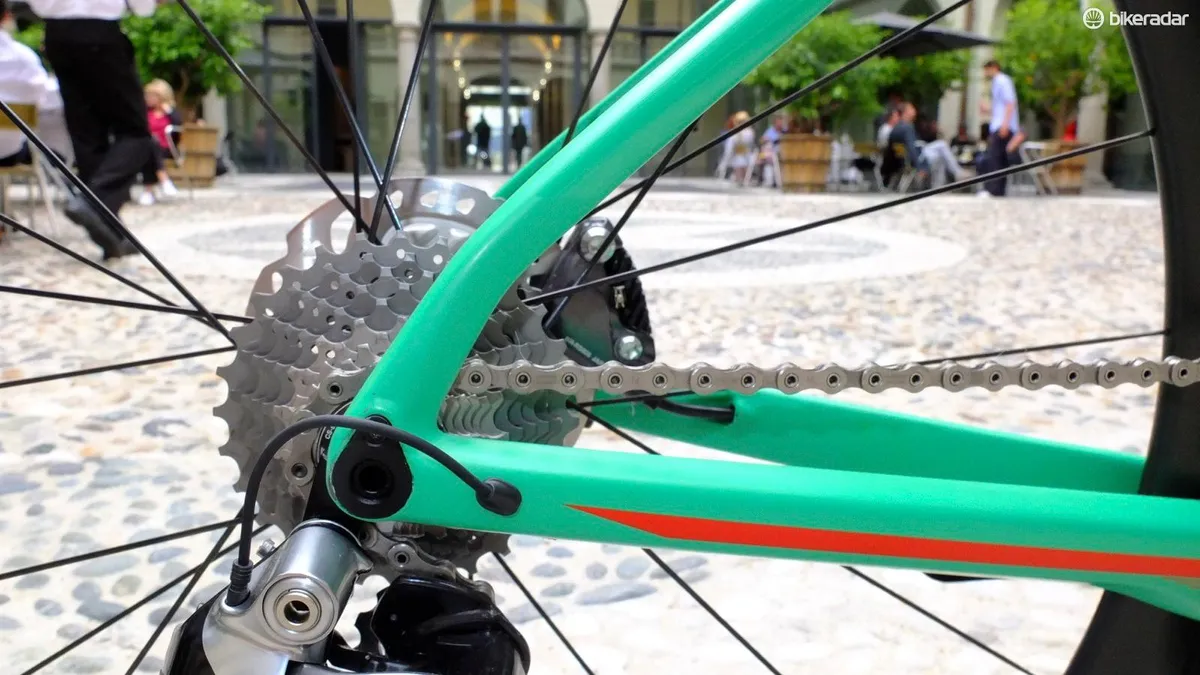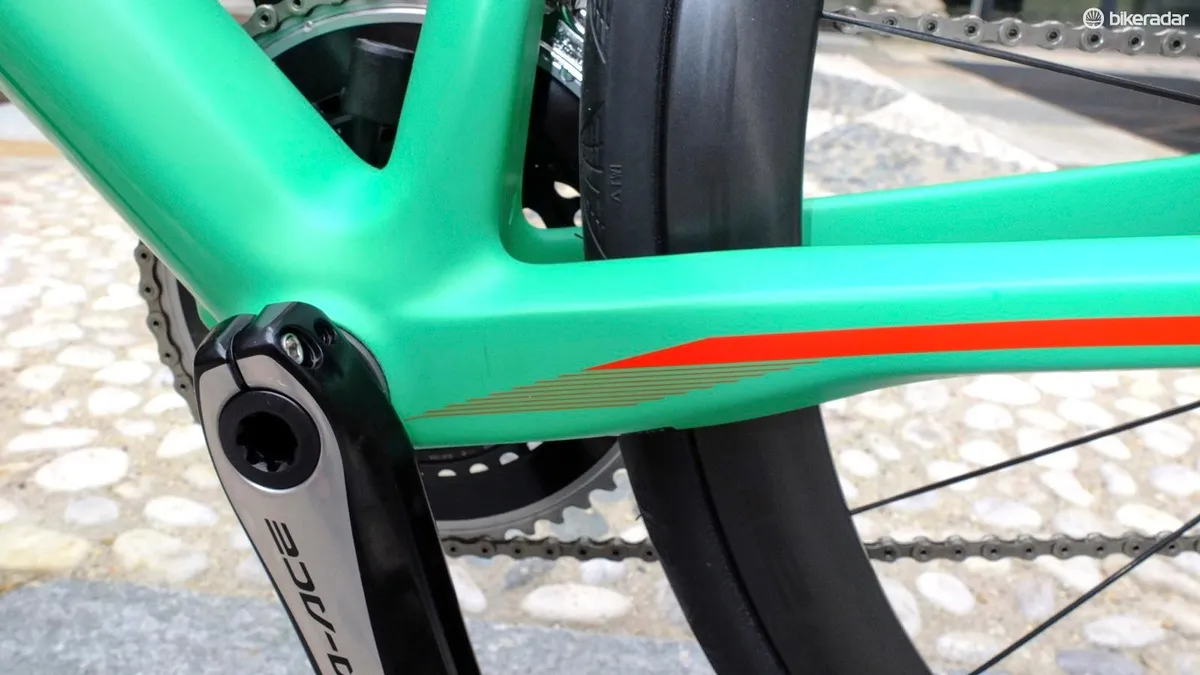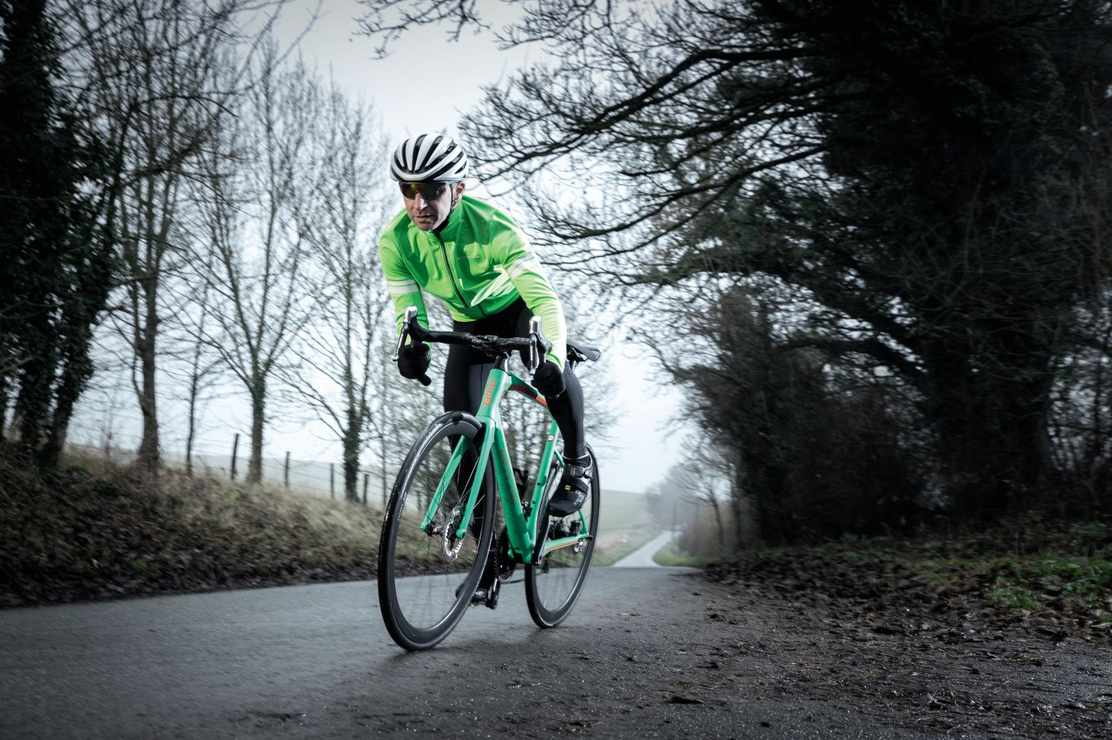I climbed aboard the new BMC Roadmachine 01 Dura-Ace Di2 for the first time without any real idea of what I was about to ride. I came away impressed.
Here at BikeRadar we attend product launches all over the globe, and although the locations and subjects differ, launches have an element of convention. There’s usually an introduction, a presentation of what’s new, and then we go test riding. Of course, it makes a lot of sense to go about things this way, but change can be a good thing, which is why it was refreshing to arrive in Turin for BMC’s latest road launch, and head off for a long test ride immediately after breakfast, and without even knowing what we’d be riding.
BMC Roadmachine 01 first ride
- BMC Roadmachine: the future of endurance road bikes?
- Shimano Dura-Ace Di2 9070 review
- BMC Teammachine SLR01 Ultegra review
As a way of forming opinions, and feeling what the new bike can do, it was a triumph, and any questions could be asked of the BMC staff, and a certain Cadel Evans, on the road.
BMC Roadmachine 01 Dura-Ace Di2: frame, equipment and spec details
While blowing away the travelling cobwebs on the long climb away from Turin’s city limits, we had ample time to assess BMC’s newest machine. Mostly complying with the brand's conventions, the new model is named Roadmachine, and there are three levels, numerically defined as 01, 02 and 03.
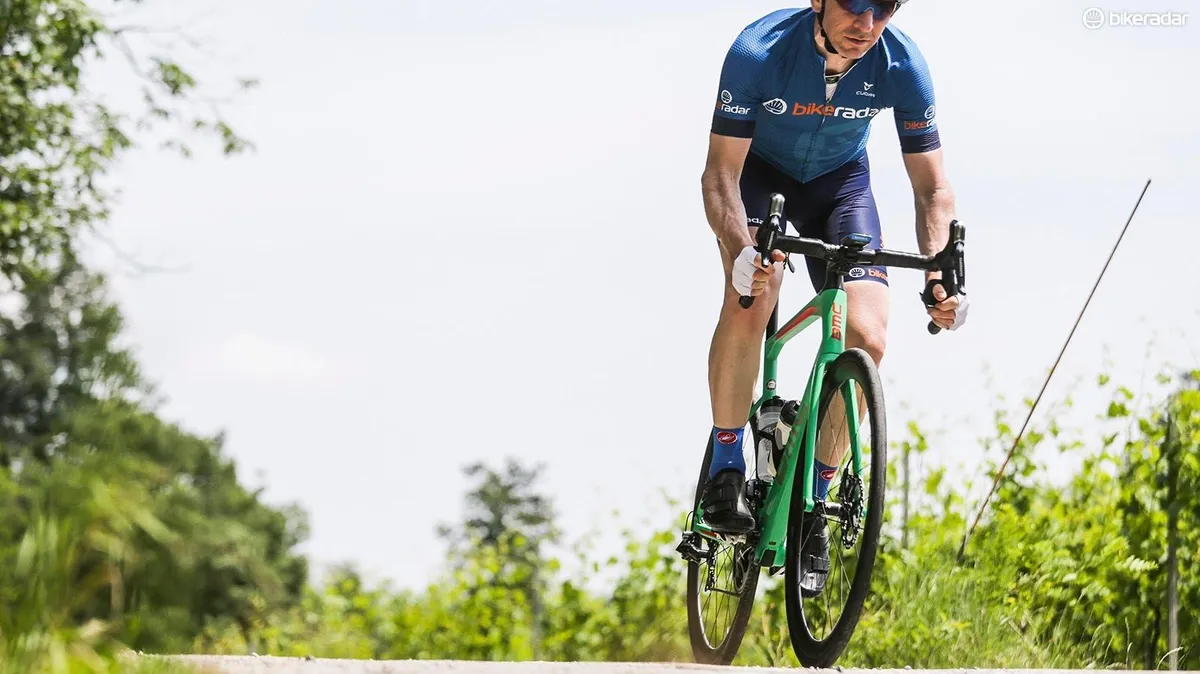
The Roadmachine is lively but stable
Looks matter, of course, and at first look, the Roadmachine looks enticing, with a profile suggesting a race-inspired endurance machine. The range is hydraulic disc brake-only, and the handlebar preferences of our riding colleagues showed a selection of positions that varied between ultra low and relaxed, but each bike maintained an integrated look. Typically angular tube profiles, giant down tube and chainstays with slim, substantially dropped seat stays are undeniably BMC, but other features warranted further investigation.
Our ride was the range-topping Roadmachine 01 Shimano Dura-Ace Di2 model, said to weigh 7.3kg (54cm) complete, with an extraordinarily clean look throughout, thanks to BMC’s clever proprietary stem which routes hydraulic hoses and the Di2 wires beneath a hidden cover. Di2’s control box clips onto this too. Cadel Evans was involved in the new bike’s development, and described the stem as complexity simplified.
Helping to keep the integrated look, BMC created Dual Stack integrated headset cones. Coming in two heights and with optional spacers, these allow almost all riders to find their preferred stack and reach position, and closely matches the positional options for both the Teammachine race and Granfondo endurance models.
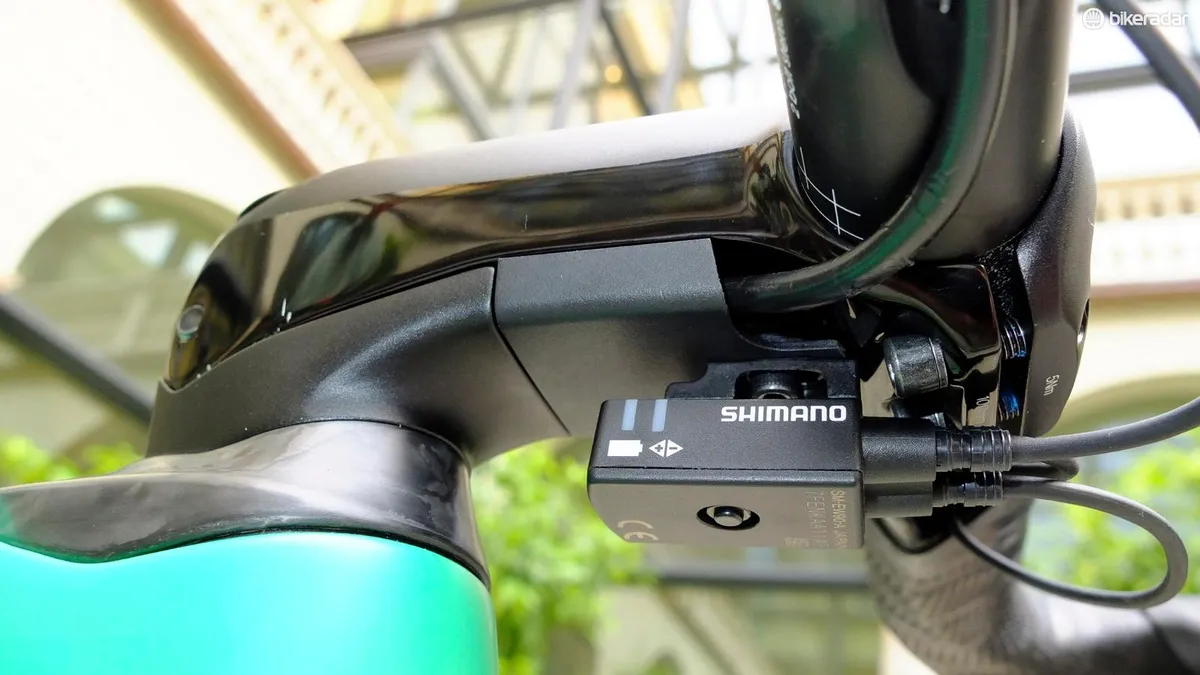
BMC's new integrated stem routes cables, hoses and wires tidily
Exiting Turin’s ancient avenues meant negotiating bustling roads mostly constructed with giant uneven stones sporting wheel-swallowing gaps, and littered with multiple tramlines. As a way to get acquainted with a bike, cyclocross-style hops, endless unavoidable bumps, sudden unsighted direction changes and sharp stops are hardly ideal, but with 28mm Continentals, faultless brakes and incredible solidity, it was a cinch – even a one-minute track stand at the lights, three minutes into the ride, felt simple.
BMC Roadmachine 01 Dura-Ace Di2: ride and handling
As the pace quickened, the handling continued to impress, with positive, quick steering matched to unerring stability for an ideal balance suited to racers and cruisers alike. When more speed was needed, the Roadmachine’s impressively proportioned lower section always delivered. Escaping erratic city drivers or digging deep on a climb were efficiently dealt with, a sharp press on the pedals producing an equally rapid speed increase. Bearing in mind its 28mm rubber, the Roadmachine is remarkably lively, with a decent change of pace, and an easy ability to sustain speed. The thru axle-fastened DT Swiss RC38C Spline carbon clinchers clearly help here, but are crucially appropriate to the bike, enhancing, not detracting from its abilities.
I could instantly feel how stable and forgiving the Roadmachine is, a relatively slack 72-degree head angle (71.2 degrees in sizes 47 and 51cm) ensures handling confidence without being sluggish to turn. Picking slow-speed routes through the urban jungle, or swooping down technical descents, the Roadmachine felt totally planted, the 1,008mm wheelbase of our 56cm frameset enhancing directional stability and keeping things calm in the cockpit.
BMC’s integrated ICS stem found on the 01, combines with a 3T carbon bar to wrestle the best out of the beefy but refined front end. Sprinting, climbing or flicking through the bends at impressive lean angles, control is never less than certain, and mid-corner line changes are intuitively simple.
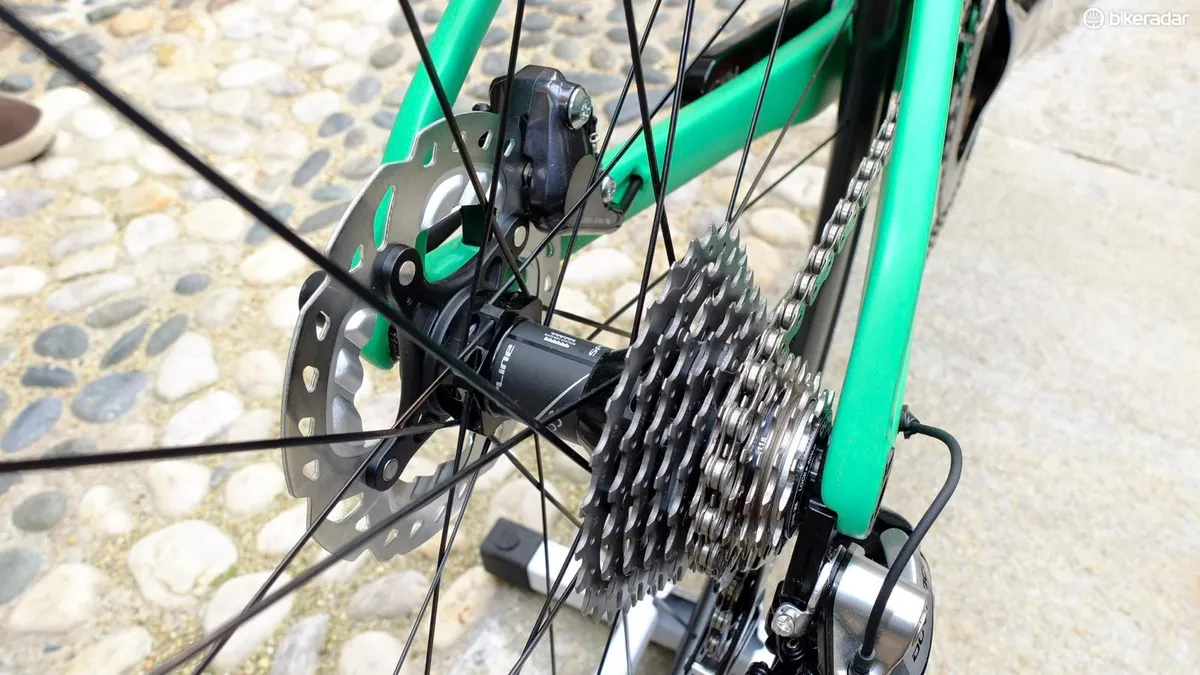
Hydraulic discs are standard across the line. The Dura-Ace bike gets a 11-28 while the Ultegra model is granted an 11-32
In terms of feel, the Roadmachine is sharper than the Granfondo GF01, and a little less aggressive and more stable than the Teammachine SLR01, but offers as much speed as either. It may then come as no surprise to learn that BMC’s test figures for BB stiffness, torsional stiffness, vertical compliance and frame weight place the Roadmachine almost exactly between its siblings.
With a raft of bump-smoothing design features, and 28mm clinchers, the new bike was unfazed by the regularly patchy Italian tarmac, soaking up mid-corner holes and giant flagstones alike. For a model that BMC hesitates to term ‘endurance’, it’s exactly the sort of bike we’d choose to go long on, as after five hours of incessantly rolling hills, the legs were tired, but the body didn’t feel beaten up at all.
The bike has 160mm front and 140mm rear disc rotors. With countless opportunities to test them throughout the day, I can say the Roadmachine’s brakes are easily up to the job – something that the BMC Racing Team already knows. Following the Paris-Roubaix disc brake racing hiatus, the test had been due to resume at this weekend’s Tour de Suisse, and BMC had two Swiss riders primed to ride the race on the Roadmachine. However, there’s been another change of plans at the UCI, and there will be no disc bikes raced again just yet, but if and when it happens, the Roadmachine will get its pro debut.
We’re huge fans of the SLR01’s performance, but the Roadmachine’s geometry makes a very similar level of ability incredibly accessible to almost any rider. What it lacks in kick-in-the-pants climbing speed, it gains in versatility, ride quality and fit. If you’re a road rider who’s not planning to race it in the near future, the Roadmachine could be all the bike you ever need.
